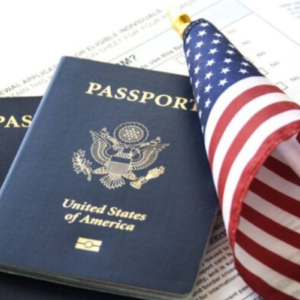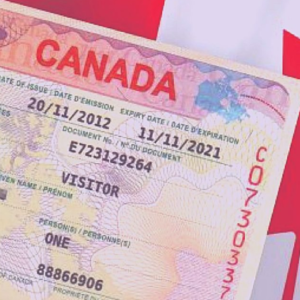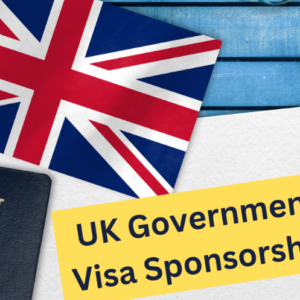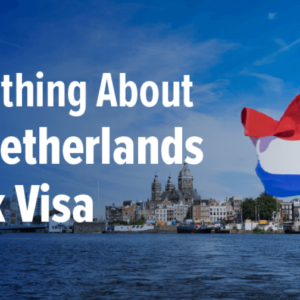Dreaming of the American Visa lottery sponsorship program? The dream of living and working in the United States is a powerful motivator for many people around the world. Fortunately, the U.S. immigration system offers a couple of avenues for obtaining permanent residency, but it’s crucial to understand the distinct characteristics of each program. This guide focuses on two prominent options: the Diversity Visa Lottery (DV Program) and Employment-Based Sponsorship.
The Diversity Visa Lottery
The Diversity Visa Lottery, often nicknamed the “Green Card Lottery,” injects a dose of chance into the immigration process. This program, run by the U.S. Department of State, aims to diversify the immigrant population in the U.S. by offering a chance for people from countries with historically low immigration rates.
Eligibility for the Diversity Visa Lottery
In terms of the The American Visa Lottery Sponsorship Program, there are two main requirements for eligibility in the Diversity Visa Lottery (DV Program):
1. Country of Birth:
The program aims to diversify the immigrant population in the U.S. Therefore, your country of birth plays a crucial role. Countries that have sent a large number of immigrants to the U.S. in the past five years are typically ineligible. The U.S. Department of State publishes a list of eligible countries each year [US Department of State Diversity Visa Lottery]. This list can change year to year, so be sure to check for the year you plan to apply.
2. Education or Work Experience:
You must meet at least one of the following minimum requirements:
- Education: You must have a high school diploma or its equivalent. This means a formal education that has been completed in a school where you received instruction in reading, writing, arithmetic, social sciences, and the sciences for a minimum of twelve years.
- Work Experience: If you don’t have the required education, you can qualify through work experience. You must have two years of work experience within the past five years in an occupation that requires at least two years of training or experience. The U.S. Department of Labor maintains a list of occupations that qualify [USDOL O*NET OnLine].
Here are some additional points to consider:
- Family: You can only submit one entry per person. Your spouse and children do not need to meet the education or work experience requirements, but they must be included on your application if you are selected.
- Native vs. Residency: Your country of birth is what matters, not your current country of residence. However, if you were born in a country that is ineligible but neither of your parents were born there or lived there as legal residents at the time of your birth, you may be able to claim your parent’s country of birth for eligibility purposes.
Meeting the eligibility requirements doesn’t guarantee selection. The lottery is completely random, but understanding the criteria is the first step towards taking a shot at this opportunity.
Application Process for the Diversity Visa Lottery
For the The American Visa Lottery Sponsorship Program, the Diversity Visa Lottery (DV Program) offers a chance at permanent residency in the U.S., but there’s a specific application window and process to follow. Here’s a breakdown of the key steps:
1. Check Your Eligibility:
The first step is to confirm your eligibility. The program prioritizes countries with historically low immigration rates to the U.S. You can find a list of eligible countries on the U.S. Department of State website, but this list changes annually, so be sure to check for the year you plan to apply [US Department of State Diversity Visa Lottery].
There’s also a minimum education or work experience requirement. You must have either a high school diploma (or equivalent) or two years of qualifying work experience in the past five years.
2. Application Window:
Don’t miss the deadline! The application window for the DV Program is typically a short period in early October through early November each year. Mark your calendars and be prepared to submit your application electronically during this designated timeframe.
3. The Electronic Application Process:
The good news is there’s no application fee for the DV Program. You’ll submit your application electronically through the official U.S. Department of State’s online portal [US Department of State Diversity Visa Lottery]. Make sure you use the designated website to avoid scams.
4. Accuracy is Key:
The application form requires basic information like your name, date of birth, and country of birth. You’ll also need to include your photograph and the information for your spouse and unmarried children (under 21) if you are selected. Double-check all your entries for accuracy. Any errors could lead to disqualification.
5. Confirmation is Crucial:
Once you submit your complete application, you’ll receive a confirmation screen containing your name and a unique confirmation number. Print this confirmation screen for your records! This number is essential for checking your entry status the following year and for any further communication with the Department of State regarding your application.
6. Selection Time:
Winners are chosen completely at random by computer program. Patience is required! You won’t find out your selection status until the following year, typically around May. The Department of State website will allow you to check your entry status using your unique confirmation number.
7. Beyond Selection:
Being selected in the lottery is exciting, but it doesn’t guarantee a visa. If chosen, you’ll receive further instructions on how to proceed with the formal application process, which involves interviews, medical examinations, and background checks. There will be associated fees for this stage of the process.
By following these steps and understanding the process, you can increase your chances of a successful application for the Diversity Visa Lottery.
Selection Process
This is where the “lottery” part comes in. Winners are chosen completely at random by a computer program. You can check your entry status the following year on the Department of State website using your confirmation number. Being selected is exciting, but it doesn’t guarantee a visa. If chosen, you’ll be able to proceed with the formal application process, which involves interviews, medical examinations, and background checks.
It’s a chance, not a guarantee. There are no fees to enter, but if selected, you’ll be responsible for all application costs associated with the formal visa process. This program is ideal for those who don’t have a job offer in the U.S. but dream of living and working there.
Employment-Based Sponsorship
This program caters to a specific need – a U.S. employer seeking a skilled worker to fill a job vacancy. Here, the employer takes the lead, sponsoring a foreign worker for a visa that allows them to live and work in the U.S.
The Employer’s Role for the Employment-Based Sponsorship
In the realm of employment-based visa sponsorship, the employer takes on a significant role as the petitioner, actively advocating for the foreign worker (beneficiary) to obtain a U.S. visa that allows them to live and work in the country. Here’s a detailed breakdown of the employer’s responsibilities in this process:
1. Job Offer and Labor Certification:
Genuine Job Opportunity: The employer must offer a legitimate, full-time (minimum 35 hours per week) permanent position. This is not a temporary job or a way to simply secure a green card for someone. The employer needs to demonstrate a genuine need for the specific skillset the foreign worker possesses.
Labor Certification (PERM Process): For many employment-based visa categories, the employer needs to obtain a labor certification from the U.S. Department of Labor (DOL). This process involves proving two crucial aspects:
- Recruitment Efforts: The employer must demonstrate they have made good faith efforts to recruit U.S. workers for the position by advertising the job opening and considering qualified U.S. applicants.
- No Adverse Impact on U.S. Workers: The employer needs to show that hiring the foreign worker will not negatively affect the wages and working conditions of U.S. workers in the same occupation and geographic area.
2. Prevailing Wage Requirement:
The employer is obligated to offer the sponsored worker a wage that meets or exceeds the prevailing wage for the specific occupation in the geographic area of employment. This prevailing wage is determined by the Department of Labor and ensures foreign workers aren’t brought in to undercut wages for U.S. workers.
3. Petition Filing with USCIS:
Once the labor certification is approved (if required for the specific visa category), the employer typically files an immigrant petition with U.S. Citizenship and Immigration Services (USCIS) on behalf of the foreign worker. This petition package includes various documents such as the job offer, labor certification (if applicable), supporting evidence of the worker’s qualifications, and the appropriate filing fees.
4. Maintaining Sponsorship Obligations:
The employer’s responsibility doesn’t end with filing the petition. They are expected to maintain certain obligations throughout the sponsorship process, which may include:
- Continuing to Employ the Worker: The employer generally needs to continue employing the sponsored worker in the position offered in the petition for a specific period, often referred to as the minimum qualifying employment requirement.
- Notification of Job Changes: If there are any significant changes to the employment terms or job duties, the employer may need to notify USCIS.
- Recordkeeping: The employer should maintain accurate records of the sponsored worker’s employment, such as paystubs and performance evaluations, for potential future government inquiries.
By understanding the employer’s role and responsibilities in the sponsorship process, companies can take a more informed approach to attracting and retaining skilled foreign workers through the U.S. immigration system.
Visa Categories for the Employment-Based Sponsorship
The U.S. immigration system offers several visa categories under the employment-based sponsorship umbrella. Each category caters to a specific need and has its own set of requirements and limitations. Here’s a glimpse into some of the prominent categories:
1. EB-1: Extraordinary Ability or Outstanding Achievement
This category targets individuals with extraordinary ability in the sciences, arts, education, business, or athletics. They must demonstrate sustained national or international acclaim and recognition in their field. The good news is that a job offer is not required for this category. Self-petitions are allowed, meaning the foreign worker can file the petition themselves.
2. EB-2: Professionals with Advanced Degrees or Persons of Exceptional Ability
This category caters to professionals with an advanced degree (master’s degree or higher) or those with exceptional ability in the arts, sciences, or business. A job offer with a U.S. employer that requires the beneficiary’s advanced degree or exceptional ability is necessary.
3. EB-3: Skilled Workers, Professionals, and Other Workers
This category is for skilled workers with at least two years of training or experience in a specific occupation, professionals with a bachelor’s degree in a field related to the offered job, and “other workers” with less than two years of training or experience but who are filling positions with a shortage of qualified U.S. workers. A labor certification is typically required for this category.
4. EB-4: Special Immigrants
This category encompasses various subcategories for specific groups of workers, such as religious workers, certain international organization employees, and some government employees. The requirements vary depending on the subcategory.
5. EB-5: Immigrant Investors
This category is designed for foreign investors who are willing to invest a significant amount of capital (currently $1.8 million in most areas) into a U.S. commercial enterprise that will create a minimum of ten new jobs for U.S. workers.
Choosing the Right Category:
The appropriate visa category for employment-based sponsorship depends on the foreign worker’s qualifications and the specific job offer. Consulting with an immigration attorney is crucial to determine the most suitable category and navigate the complex application process. By understanding the different visa categories and their requirements, employers and foreign workers can embark on the employment-based sponsorship journey with a clearer roadmap to success.
See More and Apply
Conclusion
For the American Visa Lottery Sponsorship Program, the American immigration system offers two distinct paths to permanent residency through visas: the Diversity Visa Lottery and Employment-Based Sponsorship.
The Diversity Visa Lottery is a random chance for people from countries with low immigration rates. There’s no sponsorship involved, but the competition is fierce. Employment-Based Sponsorship caters to a specific need – a U.S. employer seeking a skilled worker. This process can be complex and requires legal expertise, but it offers a more targeted approach.
Ultimately, the choice depends on your individual circumstances. If you dream of living in the U.S. and have the necessary qualifications, both programs hold promise. By understanding the eligibility requirements, application processes, and visa categories, you can increase your chances of navigating the path to a new life in the United States.





